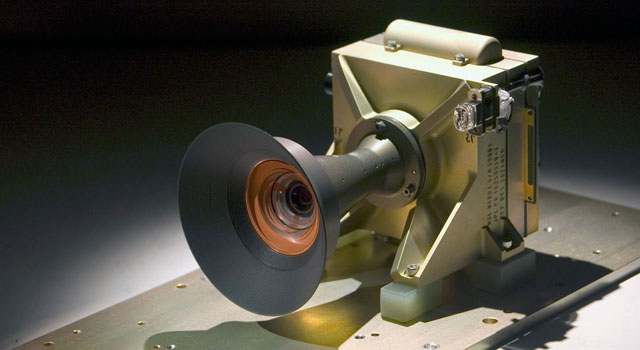Communication Systems
The Deep Space 9 probe will utilize an advanced communications system in order to maintain communications with earth throughout its journey. The probe will contain two communication systems. The primary system is a 2.4 GHz link with a high gain directional antenna and is used for all primary communications. The secondary system will use a low frequency 2 MHz pulse for tracking during transit between solar systems.
The primary link will use a high gain 60 dB antenna. The antenna will be made of a conductive mesh that can fold out of the probe after it has been launched into space. This antenna is significantly lighter and more durable than a fixed dish antenna, and reduces the chance of damage to the antenna during launch. Once in orbit, the antenna can be folded out and pointed using an advanced solid state electromagnetic pointing system (EPS). A highly directional antenna must be aimed precisely back at earth in order to establish communications over the significantly long link. A traditional geared motor approach would normally work to aim the antenna, however due to the extremely long time that the system must remain operational; the components must have as few moving parts as possible. The EPS system places the back of the antenna into a two axis arrangement inside the probe. Two powerful electromagnets will be used to adjust the tilt of the antenna on each axis. This allows for precise movement of the antenna for accurate pointing back towards earth.
 Primary antenna in its open position.
Primary antenna in its open position.
 Primary antenna in its closed position.
Primary antenna in its closed position.
The earth station will have a large, 100 dB fixed antenna for receiving. With a distance of 10.5 light years (9.9 x 1016 meters), a 2.4 GHz carrier, a 60 dB transmit antenna, a 100 dB recieve antenna and 2kW of transmit power, we expect to see around -150dBm of received signal strength, communications will be difficult, and easiest at night because of reduced noise power from the sun. A BPSK signal will be used to modulate the carrier.
The secondary communication system will use a 4 MHz dipole antenna. It will send a simple FM signal back to earth with basic data from the probe. Using this data, the known acceleration rates of the ion drive, and the relative Doppler shift measured on Earth, we will know roughly where the probe is on its journey. The transmitter will use a high precision oscillator to ensure accurate frequency representation. This tracking information will help us determine how long the journey into the cosmos will take.
Camera System
The Deep Space 9 probe will be equipped with EPERI, the EPsilon ERidani Imager.

EPERI Camera System detached from probe
EPERI is a high definition camera with modest power requirements (10W operating, 4W standby, including power supply losses) and a small size (~7x7x10 cm, ~600g).
It will provide 1600x1200 pixel, low noise images acquired every 0.2 seconds which will then be encoded using the MPEG-2 format.
This site is © Another ECE 6390 Project
|

